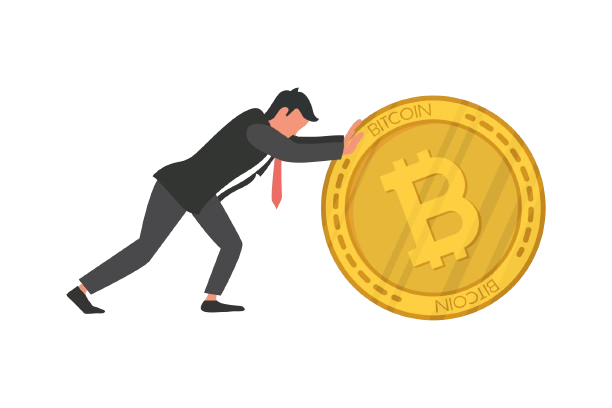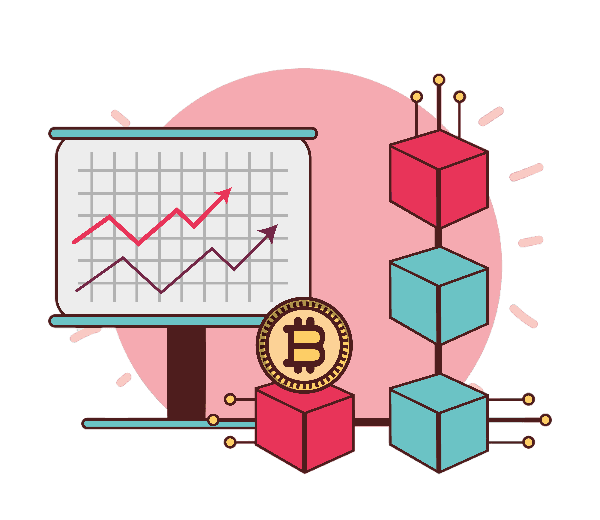
Trading is often described as a battle of the mind as much as a battle between buyers and sellers. Psychology heavily influences trading behaviors and outcomes. Understanding how emotions and mental biases impact decisions is key to improving trading performance. For volatile assets like Bitcoin, psychology is even more integral to trader success. In this article, we explore how different psychological factors influence Bitcoin trading decisions and potential methods to overcome detrimental impulses.
Fear and Greed
The most prominent psychological influence in any market is fear and greed. In Bitcoin markets especially, excessive fear leads to selling and capitulation at cycle lows while uncontrolled greed results in FOMO-fueled buying at euphoric tops. These extreme emotions cause traders to make impulsive, irrational decisions contradicting prudent strategy. Mastering fear and greed is critical to avoid buying crypto tops or panic-selling bottoms. Maintaining perspective on the long-term trajectory and value proposition of Bitcoin helps overcome short-term volatility spikes that evoke emotion. Also, auto-executing trades via pre-set orders helps remove real-time emotions from the equation.
Loss Aversion Bias
Many traders have greater anxiety over minimizing losses than maximizing gains. This leads to prematurely exiting profitable positions that continue trending favorably while holding or even averaging down losing positions. Traders are unwilling to realize the loss. But markets can be irrational longer than traders can stay solvent. Having a defined stop-loss strategy and maximum tolerance for losing positions is important, regardless of a trade’s theoretical potential. Also, viewing portfolio gains and losses collectively rather than on a trade-by-trade basis helps curb loss aversion.
Overconfidence

Traders, especially beginners, frequently exhibit unwarranted faith in their abilities, forecasting skills, and trade ideas. They believe they have unique insights, can anticipate price movements, or handpick only the best trades. In reality, markets are highly complex and efficiently incorporate information.
Maintaining humility is essential. Also, backtesting trading systems help overcome overconfidence. If a strategy is robust, it will generate consistent results across different periods. Overfitting the system to limited past data should raise skepticism.
Confirmation Bias
Traders often fall into the trap of seeking or interpreting information in a way that confirms pre-existing beliefs while dismissing contradictory data. For example, clinging to a long bias regardless of emerging bearish data. Fighting confirmation bias requires actively challenging why you hold certain beliefs or trade ideas. Deliberately look for disconfirming evidence as you shape your outlook. Also, automating trading systems following objective rules helps combat confirmation bias creeping into discretionary decisions.
Gambler’s Fallacy
After a string of similar price movements, traders become convinced a reversal is “due” based on the belief markets have a mechanism to correct or balance the previous action. In reality, price trends can sustain for much longer than expected. There is no assurance that a long green candle will be followed by a red one or vice versa just because it “should”. Past performance does not dictate future results. Understanding chart patterns and indicators that identify trend direction can help determine if momentum will likely continue rather than expecting certain reversals.
Loss Tolerance
Everyone has a different level of risk tolerance. Some traders may incur small losses targeting a certain profit but quickly cut trades if losses exceed their mental stop point. Others with higher loss tolerance are comfortable with open-ended large losses. Knowing one’s loss tolerance and structuring trades accordingly is critical. Using stop losses helps enforce maximum loss limits. Assessing past trades helps quantify loss tolerance thresholds. If losses consistently induce exiting, those represent mental barriers requiring planning around.
Fear Of Missing Out (FOMO)

For emotional traders, rising prices generate immense fear of being left out of further gains, causing them to chase rallies. When prices fall, the fear switches to missing the rebound. This whipsaw mentality produces poor entries and exits.
Following core trading principles, identifying optimal risk/reward scenarios, and focusing on high-probability setups prevent ineffective FOMO-based decisions. Also, limiting social media consumption helps reduce FOMO pressure as ephemeral hyped narratives overemphasize singular price movements versus adhering to sound, planned trading strategies.
Endowment Effect
When traders own an asset, they ascribe greater value to it. This causes reluctance to sell at the right price. When finally selling, traders often want more than recent levels justify. Avoiding emotional attachments and accurately evaluating assets relative to current prices improves sale decisions. Again, using stop losses and profit targets is a prudent strategy rather than gut-driven discretionary holding periods. What you originally paid is irrelevant – the current chart and indicators should drive sell decisions, not endowment attachment.
Status Quo Bias
Traders naturally prefer to continue current behaviors or strategies over change, even if data suggests change may improve performance. Deviating from the status quo requires acknowledging flaws, which evokes discomfort. Challenging current practices with critical self-assessment is essential for evolution and progress. Analyzing strategy performance at regular intervals forces appropriate recalibration. Also, granting new techniques a limited trial to overcome bias against change can lead to trading enhancements.
Herd Mentality
Humans have an instinctual tendency to follow the crowd. In trading, this manifests in mirroring popular sentiment rather than objectively analyzing information and charts to form independent opinions. Adopting a contrarian mindset that questions rather than assumes crowd wisdom provides an edge. Detaching from ephemeral social media narratives surrounding Bitcoin markets can help overcome herd tendency. Also, sticking to trading plans and ignoring forces trying to induce you to join the herd enhances discipline.
Avoiding Destructive Bitcoin Trading Psychology

Understanding psychological influences is the first step toward neutralizing their detrimental impacts. Bitcoin’s high volatility specifically preys on emotions and biases. Maintaining composure, planning, discipline, and perspective is easier said than done but essential.
Beyond awareness, technical aids like system automation, pre-set orders, defined risk tolerance, and backtesting help act rationally during irrational market swings. Seeking a community of seasoned traders to challenge assumptions and biases provides accountability. Tuning out noise and hype to objectively focus on high-probability, high-reward trades with proper risk mitigation improves trading psychology. Mastering the mental game and emotions involved in trading may present an even steeper but more rewarding challenge than technical analysis skills.
Conclusion
The growing literature on trading psychology reveals just how greatly emotions and biases impact behaviors and performance. Bitcoin traders must make many decisions under time pressure while processing high-stakes probabilistic situations with imperfect information. That environment naturally activates the brain’s impulse response, leading to cognitive and emotional effects that derail the execution of sound strategies. Through knowledge, planning, discipline, and technology, traders can neutralize psychology’s detrimental impacts. While mastering the mental game presents a difficult journey, doing so may unlock lasting trading success beyond any technical indicators. Your brain can be your most formidable obstacle or most valuable asset in thriving across Bitcoin’s volatile landscapes. The choice is yours.